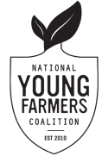Agricultural land is being lost at a rate of 2,000 acres per day. At the same time, purchases of farms—both protected and not—as second-home properties are on the rise, creating a real estate environment in many parts of the country in which the value of land far exceeds what a farmer can afford. Once land transitions out of farmer ownership, it rarely goes back.
The federal Agricultural Conservation Easement Program-Land Easement Program (ACEP-ALE) and Regional Conservation Partnership Program (RCPP) are two programs administered by the Natural Resources Conservation Service that provide funding through non-profits (such as land trusts), state and local agencies, and Tribes to protect farmland from development.
Traditional agricultural conservation easements protect land from residential and other development pressures, but do not guarantee that an individual who earns their income from farming will own the protected land in the future. Working farm easements contain additional restrictions, such as Preemptive Purchase Rights or the Option to Purchase at Agricultural Value, that strengthen traditional easements. These easements not only protect land from development, but also help ensure that protected land is sold at its agricultural use value to future farmer owners. Congress should prioritize these projects for ACEP-ALE and RCPP funding along with projects that provide secure land tenure to BIPOC farmers. Examples of these types of projects include OPAVs, lease-to-own, and buy-protect-sell.
ACEP-ALE allows buy-protect-sell under new provisions in the 2018 Farm Bill. This means that land trusts can help quickly get land off the market while creating farmland access opportunities for farmers by purchasing land, applying to receive funds through ACEP-ALE to place a conservation easement on the land, and subsequently selling the land to an incoming farmer buyer. Buy-protect-sell is an innovative and critical tool in getting young farmers on the land because, by enabling land trusts to add a conservation easement at the point of sale, it can significantly reduce the total price of the farm and make it accessible to younger producers.
